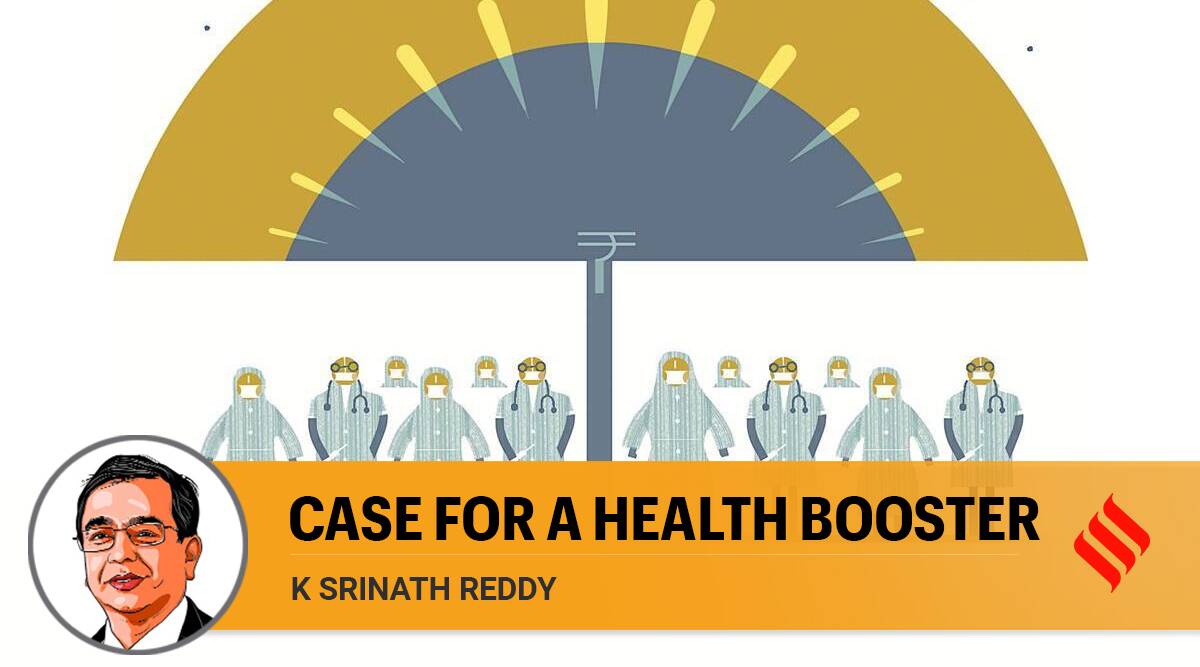How the Budget can push India’s health system transformation
- The Covid epidemic produced a community agreement on the need to reform our health system after decades of low government spending on health.
Steps to strengthen our health system
- Greater investment in rural and urban primary care, a countrywide disease monitoring system stretching from the block level to national institutions, a larger health workforce, and hospital critical care capacity expansion were all suggested by the Fifteenth Finance Commission.
- The proposed Pradhan Mantri Aatmanirbhar Swasth Bharat Yojana (PMASBY) in the Union budget of 2021 mirrored these aims, with a budget of Rs 64,180 crore and a six-year implementation period.
- A broader perspective on health: By combining appropriations for water, sanitation, nutrition, and air pollution management with the health budget, the Finance Minister projected a larger image of health beyond healthcare.
- The Digital Health Mission was established in September 2021 under the Ayushman Bharat banner.
- The Health Infrastructure Mission was a rebranded and expanded version of the PMASBY, which was started in October 2021.
- These missions are in addition to the two other Ayushman Bharat components that were introduced in 2018.
- The National Health Mission (NHM) oversees the Comprehensive Primary Health Care (CPHC) component, whereas the National Health Authority oversees the Pradhan Mantri Jan Arogya Yojana (PMJAY) (NHA).
What needs to be done
- While the states are responsible for much of the following, the Centre should encourage and support their efforts.
- Synergize: The CPHC's primary healthcare services, as well as their integration with water, sanitation, nutrition, and pollution control programs, will increase the health system's ability for disease prevention and health promotion.
- The budget for 2022 must not only fully support these tasks, but also show how they will work together synergistically despite operating under various administrative agencies.
- More funding should be allocated: In the budget for 2021, the NHM obtained just a 9.6% rise.
- Last year, PMJAY did not experience a rise in allocation due to a substantial drop in non-Covid care utilization the year before.
- More crucially, restricting cost coverage to hospitalized treatment limits the PMJAY's ability to significantly cut out-of-pocket health spending, which is primarily driven by outpatient care and pharmaceutical costs.
- Focus on the Digital Health Mission: The Digital Health Mission has the potential to improve the efficiency of health care systems in a number of ways.
- Better data collection and analysis, improved medical and health records, efficient supply chain management, tele-health services, support for health workforce training, implementation of health insurance programs, real-time monitoring and sharper evaluation of health program performance, and effective multi-sectoral coordination are just a few examples.
- Expand the number of healthcare workers and enhance their skills: We need to increase the number of healthcare employees and improve their abilities in all categories.
- While specialized doctor training may take longer, frontline personnel such as Accredited Social Health Activists (ASHAs) and Auxiliary Nurse Midwives (ANMs) can be trained in less time.
- Invest in district hospitals: Hospitals in the district need to be modernized, with more money spent on infrastructure, equipment, and manpower.
- District hospitals in underprivileged areas should be improved to become training centers for medical, nursing, and allied health professional students.
Conclusion
- The broader definition of health, as outlined in last year's budget, must be maintained in order to integrate other sectors with public health goals. The Union budget for 2022 has the potential to give our health-care revolution even more impetus.


